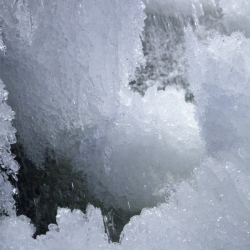
One of the reasons professional athletes illegally use steroids is to help speed up their recovery time after a particularly gruelling game or injury, thus making them fresh as spring chickens the next time they compete. But one of the goals of helping the body to recover is lowering core temperature, and Stanford believes that the heat-extracting glove they’re developing is so effective at lowering core body temperature that it might actually be better than steroids in speeding up recovery time. And it’s closer to being a readily available product than you think.
Building off the common knowledge that the hands, feet and face are the body’s most effective radiators, Stanford researchers have developed a technology that creates a vacuum around a hand and sucks the heat right out from the body.
The newest version of the device is a rigid plastic mitt, attached by a hose to what looks like a portable cooler. When Grahn sticks his hand in the airtight glove, the device creates a slight vacuum. The veins in the palm expand, drawing blood into the AVAs, where it is rapidly cooled by water circulating through the glove’s plastic lining.
The method is more convenient than, say, full-body submersion in ice water, and avoids the pitfalls of other rapid palm-cooling strategies. Because blood flow to the AVAs can be nearly shut off in cold weather, making the hand too cold will have almost no effect on core temperature. Cooling, Grahn says, is therefore a delicate balance.
The scary part is that the device already works better than its creators could have ever imagined. Not only did it help out with patients recovering from injury, but the effect it had on athletes was nothing short of revelatory. When tested on a resident fitness freak, he was able to increase his number of pullups per session from 180 to 620 over a span of six weeks. All he did was connect the glove to his hand between every other set, let it run for a few minutes, and then return to his pullups. Any residual fatigue from an earlier part of the workout was non-existent.
